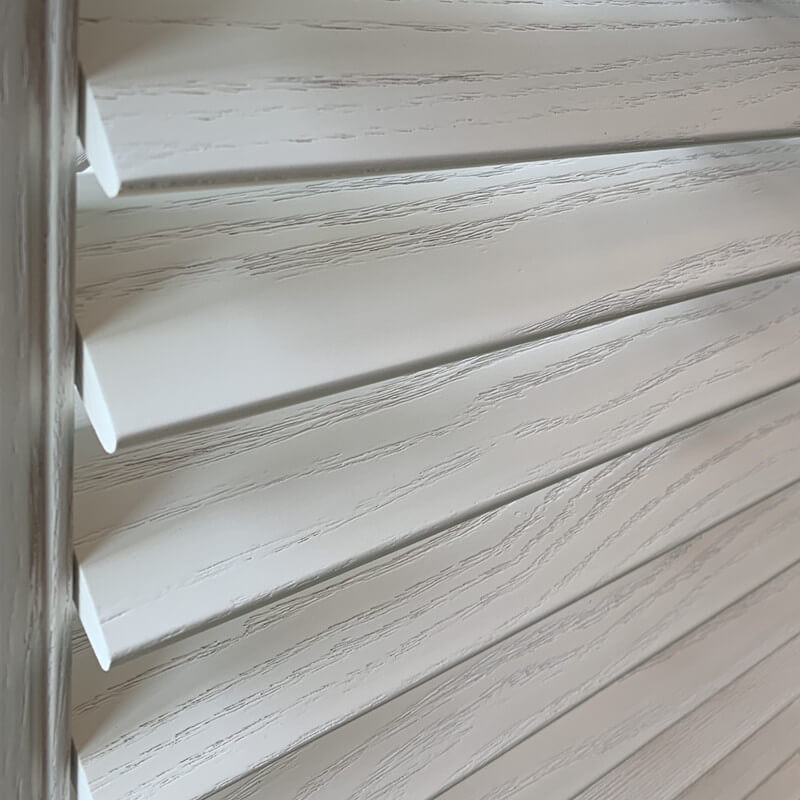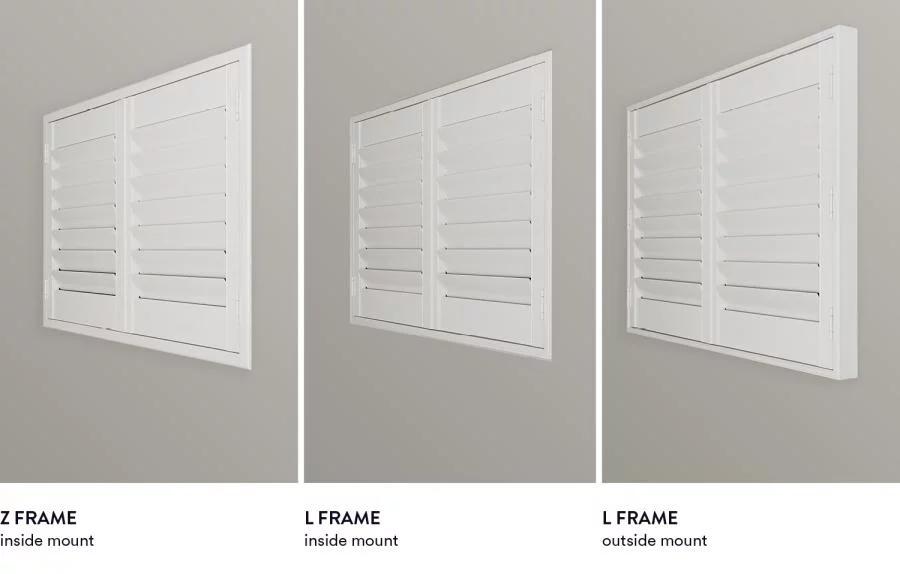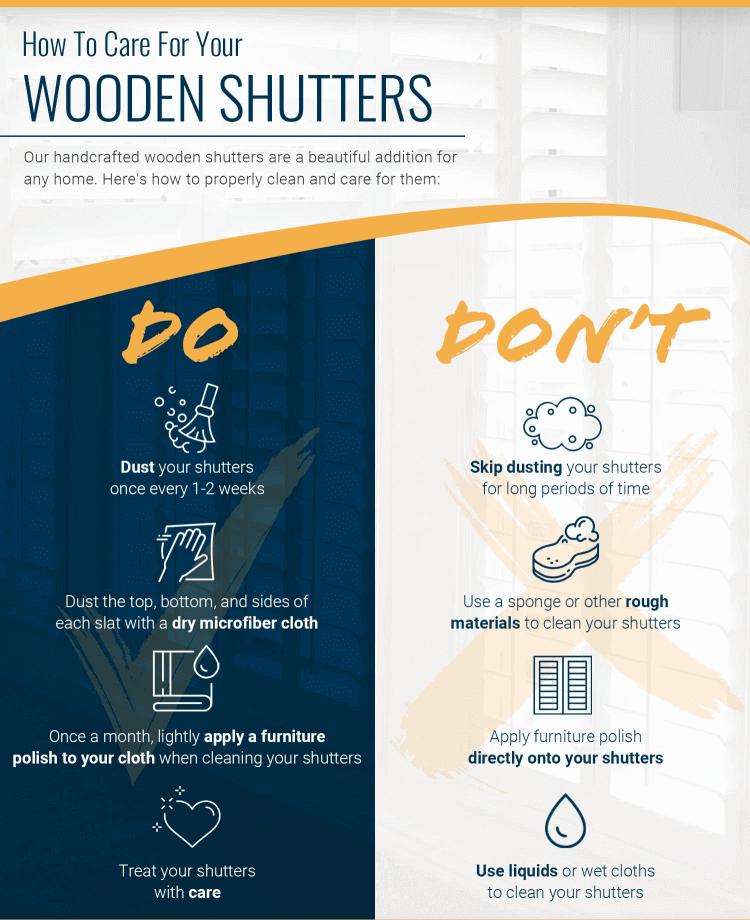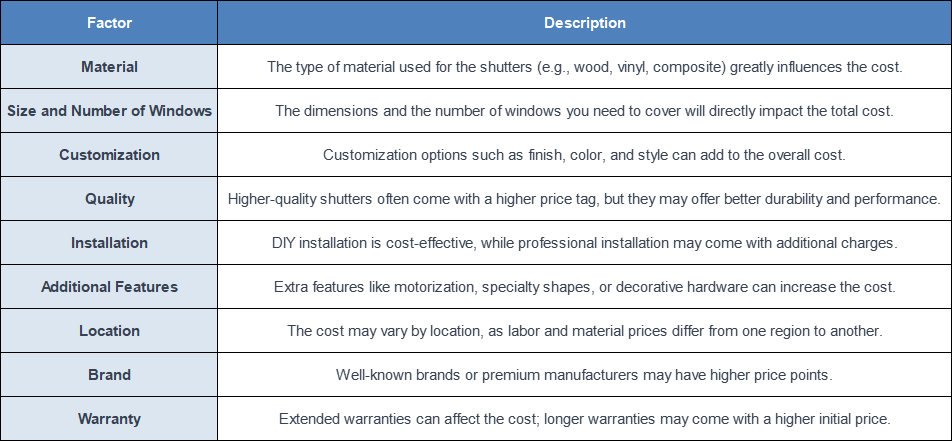Plantation shutters are one of the most popular and versatile window treatments available. They can enhance the beauty, comfort, and value of your home. But how do you choose the best plantation shutters for your windows? There are many factors to consider, such as the material, size, style, color, and installation options.
This blog article will guide you through selecting the perfect plantation shutters for windows. We will also share tips and tricks to help you get the most out of your plantation shutters. Whether you want to create a cozy, elegant, or modern look for your windows, plantation shutters can help you achieve it. Read on to find out how to choose the best plantation shutters for your windows.
What are Plantation Shutters and Why Are They Popular?
Plantation shutters are a type of window covering that consists of horizontal slats that can be tilted to adjust the amount of light and air that enters the room. They are usually mounted inside the window frame and can be opened or closed like a door. Plantation shutters are popular because they offer many benefits, such as:

They are durable and easy to maintain.
Plantation shutters are made of materials that can withstand moisture, heat, and UV rays. They do not fade, warp, or crack over time. They are also easy to clean with a damp cloth or a vacuum cleaner.
They are energy-efficient and eco-friendly.
Plantation shutters can help you save money and energy by reducing the heat loss or gain through your windows. They can also block out unwanted noise and provide privacy. Plantation shutters are made of natural or recycled materials that are biodegradable and renewable.
They are stylish and versatile.
Plantation shutters can complement any home decor and style. They come in various colors, sizes, shapes, and designs. You can customize your plantation shutters to match your furniture, walls, and accessories. You can also choose different types of plantation shutters for other rooms in your home.
The Different Types of Plantation Shutters for Windows
There are three main types of plantation shutters: wood, faux wood, and composite. Each type has pros and cons, depending on your preferences, budget, and needs. Here is a brief overview of each type:
Wood Plantation Shutters
Wood plantation shutters are typically crafted from various types of hardwood, chosen for their durability, strength, and attractive grain patterns. The wood species used can vary based on manufacturer preferences and regional availability.

Pros:
- Classic Aesthetic: Wood shutters offer a timeless, elegant look that complements various interior styles.
- Natural Insulation: Wood provides good insulation, helping regulate indoor temperatures and increase energy efficiency.
- Customization: They can be easily customized in size, color, and finish to match specific preferences.
Cons:
- Susceptible to Moisture: Wooden shutters may warp or crack in high-humidity environments, such as bathrooms or kitchens.
- Higher Cost: Wood shutters are generally more expensive than alternatives like faux wood.
Faux Wood Plantation Shutters (PVC/Vinyl)
Faux wood plantation shutters, also known as PVC (polyvinyl chloride) or vinyl shutters, are made from synthetic materials designed to mimic the appearance of real wood.

Pros:
- Moisture Resistance: Moisture-resistant, making them suitable for high-humidity areas like bathrooms and kitchens.
- Cost-Effective: Faux wood shutters are often more budget-friendly than their real wood counterparts.
- Low Maintenance: Easy to clean and maintain, as they don’t warp, fade, or crack like real wood.
Cons:
- Appearance: While advancements have been made, some people may still prefer the natural look of real wood.
- Heavier: Faux wood shutters can be more serious than real wood, potentially requiring additional support during installation.
Composite Plantation Shutters
These shutters are made of wood and synthetic materials, such as MDF, resin, or fiberglass. They are also known as engineered wood shutters, and they balance the benefits and drawbacks of wood and faux wood shutters.

Pros:
- Durability: Composite shutters combine materials for enhanced durability, resisting warping, cracking, and fading.
- Versatility: They can be used in various environments, including high-humidity areas.
- Cost-Effective Alternative: Composite shutters offer a middle-ground option in terms of cost, providing some benefits for both wood and faux wood.
Cons:
- Weight: Similar to faux wood, composite shutters can be heavier, requiring proper installation for support.
- Appearance: Some may still prefer the natural aesthetic of real wood over the composite look.
Choosing the right type of plantation shutter depends on factors like budget, aesthetic preferences, and the specific environment in which they will be installed.
How to Measure Your Windows for Plantation Shutters?
Measuring your windows accurately is crucial when ordering plantation shutters to ensure a proper fit. Here’s a step-by-step guide on how to measure your windows for plantation shutters:

Inside Mount or Outside Mount?
Inside Mount:
- Measure the width at the window’s top, middle, and bottom. Use the smallest measurement to ensure the shutters fit within the window frame.
- Measure the height on the left, center, and right. Again, use the smallest measurement.
- Provide the exact measurements to the manufacturer, who will deduct a small amount to allow for clearance.
Outside Mount:
- Measure the width from the outer edge of the window molding on one side to the outer edge on the opposite side.
- Measure the height from the top of the window opening to the desired length below.
- Consider how far beyond the window you want the shutters to extend on each side.
Tools Needed
- Steel Tape Measure: For accurate measurements.
- Pen and Paper: To record measurements.
- Step Ladder: If your windows are high.
Step-by-Step Process
Width Measurements:
- For the inside mount, measure the width at the window’s top, middle, and bottom. Use the smallest measurement.
- For the outside mount, measure the width from the outer edge of the window molding on one side to the outer edge on the opposite side.
Height Measurements:
- Measure the left, center, and right heights for the inside mount. Use the smallest measurement.
- For the outside mount, measure the height from the top of the window opening to the desired length below.
Depth Measurements:
- For the inside mount, measure the depth of the window frame. Ensure the shutters have enough space without interfering with handles or other obstructions.
Considerations for Café Style or Tier-on-Tier:
- If you’re getting café style shutters (covering only part of the window), measure the height from the top to the desired bottom position.
- For tier-on-tier shutters (two separate sections that can be operated independently), measure each section separately.
Additional Considerations:
- Note any obstructions like handles, window cranks, or tiles that may affect the installation.
- Check for any irregularities in the window shape, such as arches or curves, and provide those details to the manufacturer.
Record and Double-Check:
- Write down all measurements and double-check for accuracy.
- Take a photo of the window to help the manufacturer visualize the space.

Always follow the manufacturer’s specific guidelines, as their requirements may vary. If in doubt, consult the company supplying the shutters for guidance on taking accurate measurements.
How to Choose the Right Color and Style of Plantation Shutters?
Choosing the right color and style of plantation shutters can greatly enhance the overall aesthetics of your home. Here’s a guide on how to make the best choices:
Consider Your Interior Design Style
- Modern and Minimalist: If your home has a contemporary and minimalist design, consider neutral colors like white, gray, or black. Opt for simple and clean lines without intricate details.
- Traditional and Classic: For a more traditional or classic look, warmer colors like beige, brown, or wood tones may work well. Choose shutters with more decorative features, like louvers with a beveled edge.
- Eclectic or Bohemian: If your home has a mixed or bohemian style, you can experiment with vibrant colors or unique patterns. Consider bold colors or shutters with custom finishes.
Match or Contrast with Wall Colors
- Matching: Matching the color of your shutters to your wall color creates a cohesive and seamless look. This is a good choice for a clean and unified appearance.
- Contrasting: Choosing a color that contrasts your wall color can create visual interest. For example, white shutters against a dark-colored wall can make a bold statement.
Consider the Room’s Purpose
- Bedrooms: Consider shutters that provide good light control and privacy for bedrooms. Neutral tones or darker colors may be preferable for better sleep.
- Living Areas: Consider shutters that complement the overall design of living rooms. Lighter colors can create a bright and airy atmosphere.
- Kitchens: Moisture-resistant materials and easy-to-clean finishes are crucial for kitchens. Consider shutters in colors that match your kitchen cabinets or appliances.

Natural Light and Room Size
- Small Rooms: Light-colored shutters can make a small room appear larger and more open. Choose shutters that allow ample natural light to enter.
- Large Rooms: You have more flexibility with color choices in larger rooms. Consider darker tones if you want to create a cozy and intimate feel.
Test Samples Before Committing
- Obtain small samples of the shutter materials and colors you’re considering.
- Place the samples in different room areas to see their appearance in various lighting conditions.
Consider Maintenance and Longevity
- Lighter colors may show less dust and dirt, providing a cleaner appearance between cleanings.
- Choose materials that are durable and easy to maintain, especially in high-traffic areas.
Get Professional Advice
- Consult with a professional designer or the supplier of the shutters for advice on color choices that complement your home’s style.
Customization Options:
- Some manufacturers offer custom finishes or paint-matching services, allowing you to get the desired color.
Remember that personal preferences play a significant role in choosing colors and styles. Take your time, gather inspiration, and choose options that align with your taste and the overall design of your home.
How to Install Plantation Shutters on Your Windows?
Installing plantation shutters on your windows can be a rewarding DIY project. Here’s a step-by-step guide to help you through the process:
Tools and Materials:
- Plantation Shutters Kit: Ensure you have all the necessary components.
- Screws and Anchors: Typically provided in the kit, but have extras just in case.
- Drill with Screwdriver Bit: For attaching frames and hinges.
- Level: To ensure the shutters are installed straight.
- Measuring Tape: Double-check measurements and alignment.
- Pencil: Marking the locations for screws and frames.
- Ladder: If your windows are high.
Step-by-Step Installation Guide:
1. Measure and Plan:
- Double-check your window measurements.
- Plan whether you want an inside or outside mount.
- Decide on the number of panels you’ll install.
2. Assemble the Frame:
- If your shutters come in a kit, follow the manufacturer’s instructions to assemble the frame.
- The frame should fit snugly within the window opening.
3. Position the Frame:
- For the inside mount, position the frame within the window opening.
- Position the frame on the wall around the window for the outside mount.
4. Level the Frame:
- Use a level to ensure the frame is perfectly horizontal.
- Make adjustments as needed.
5. Mark Screw Locations:
- Mark the locations for screws along the frame.
- For the inside mount, mark on the window frame.
- For outside mount, mark on the wall.
6. Pre-Drill Holes:
- Use a drill to pre-drill holes for the screws.
- Ensure the drill bit is slightly smaller than the screws.
7. Attach the Frame:
- Attach the frame to the window or wall using screws.
- Start with the top screws and then move to the sides and bottom.
8. Install the Shutters:
- If your shutters come in separate panels, attach the hinges to the frame and the shutters according to the instructions.
- Carefully lift the shutter panels and hang them on the hinges.
9. Adjust Louver Tension:
- Many shutters have a tension screw to adjust the tightness of the louvers.
- Adjust as needed for smooth operation.
10. Check for Proper Operation:
- Open and close the shutters to ensure they operate smoothly.
- Check for any misalignments or issues.
11. Repeat for Additional Panels:
- If you have multiple panels, repeat the process for each one.
12. Finishing Touches:
- Touch up any visible screw heads with paint or a color-matched marker.
- Clean the shutters to remove any dust or fingerprints.
Tips for Success
- Follow Manufacturer’s Instructions: Always refer to the specific instructions provided by the manufacturer.
- Enlist Help: Installing shutters can be easier with a second set of hands, especially for larger panels.
- Take Your Time: Rushing the installation can lead to mistakes. Take your time to ensure everything is done correctly.
If you need clarification on any process step, consult the manufacturer’s instructions or seek professional advice. Proper installation ensures that your plantation shutters look great and function smoothly.
How to Care for and Clean Your Plantation Shutters?
Caring for and cleaning your plantation shutters is essential to maintain their appearance and functionality. Here’s a guide on how to keep your shutters in top condition:

Regular Cleaning
1. Dusting:
- Use a feather duster or a soft, dry cloth to dust the louvers regularly.
- Start from the top and work your way down to capture any falling dust.
2. Vacuuming:
- Use a vacuum cleaner with a brush attachment for a thorough clean.
- Gently run the brush along the louvers and frame.
3. Microfiber Cloth:
- Dampen a microfiber cloth with water, a water mixture, and mild dish soap.
- Wipe each louver individually, ensuring all surfaces are cleaned.
Deep Cleaning
1. Remove the Shutters:
- Remove the shutters for a more thorough cleaning.
- Follow the manufacturer’s instructions for removal.
2. Soapy Water:
- Fill a basin or bucket with warm, soapy water.
- Dip a soft cloth or sponge into the soapy water and wring it out.
3. Clean Louvers:
- Wipe down each louver with a damp cloth or sponge.
- Pay extra attention to any spots or stains.
4. Clean Frame and Hinges:
- Clean the frame and hinges with a damp cloth.
- Use a toothbrush for hard-to-reach areas.
5. Rinse:
- Rinse the cloth or sponge and wipe down the shutters to remove soap residue.
6. Dry Thoroughly:
- Use a dry, clean cloth to dry the shutters thoroughly.
- Ensure no moisture is left behind.
Stain Removal
1. Grease or Oil Stains:
- Mix a small amount of mild dish soap with water.
- Gently rub the stained area with the soapy water mixture.
2. Ink or Marker Stains:
- Dab a small amount of rubbing alcohol on a cloth.
- Gently blot the stained area.
3. Scuff Marks:
- Use a white or pencil eraser to rub out scuff marks gently.
Additional Tips
- Avoid Harsh Chemicals: Steer clear of abrasive or chemical cleaners that can damage the finish.
- Avoid Excessive Moisture: While plantation shutters are durable, excessive moisture can lead to warping. Use a damp, not wet, cloth for cleaning.
- Regular Inspections: Periodically inspect the shutters for any loose screws, hinges, or other issues. Tighten or repair as needed.
- Professional Cleaning: Consider professional cleaning services for a thorough, occasional cleaning.
Maintenance Schedule
- Weekly: Dusting with a feather duster or vacuuming.
- Monthly: Wipe down louvers with a damp microfiber cloth.
- Bi-Annually: Deep cleaning with soapy water for a more thorough clean.
By following these care and cleaning tips, you can ensure that your plantation shutters remain a stylish and functional window treatment in your home for years.
The Cost and Value of Plantation Shutters
Understanding the cost and value of plantation shutters is crucial for homeowners considering this stylish and functional window treatment. Let’s delve into the factors that influence the cost and the overall value of plantation shutters.

Factors Influencing Cost
Materials:
- Wood, faux wood, vinyl, and composite are common materials.
- Wood shutters are typically the most expensive, followed by composite, faux wood, and vinyl.
Size:
- Larger shutters require more material, labor, and hardware, influencing the overall cost.
- Full-height shutters are generally more expensive than cafe-style shutters.
Installation:
- DIY installation can save on labor costs, but professional installation ensures quality.
- Professional installation costs vary based on location and complexity.
Customization:
- Custom sizes, finishes, and additional features may increase costs.
- Standard sizes and finishes are more budget-friendly.
Brand and Quality:
- Reputable brands or higher-quality materials may come with a higher price tag.
- Consider the warranty and durability when assessing quality.

Average Cost Range
- Wood Shutters: $300 to $400 per window on average.
- Vinyl Shutters: $100 to $200 per window on average.
Installation:
- DIY: $50 to $100 per window.
- Professional: $100 to $200 per window.
Maintenance: $50 to $100 per year on average.
Tips for Cost Savings:
Compare Prices:
- Obtain quotes from different suppliers and retailers.
- Look for discounts, promotions, and bulk purchase deals.
Choose Wisely:
- Select materials, sizes, and types that align with your budget.
- Avoid unnecessary customizations if they don’t add significant value.
DIY Installation:
- If skilled, consider installing shutters yourself to save on labor costs.
- Follow manufacturer guidelines for correct installation.
Regular Maintenance:
- Regular upkeep can prevent costly repairs in the long run.
- Address issues promptly to maintain the shutters’ condition.
Buy During Sales:
- Timing your purchase during sales or promotions can lead to cost savings.
- Keep an eye on seasonal discounts.
Understanding the cost and value dynamics of plantation shutters allows homeowners to make informed decisions that align with their preferences, budget, and long-term goals.

Plantation shutters are a great way to enhance your home’s beauty, comfort, and value. They can also help you save money and energy by improving the insulation and ventilation of your windows. However, choosing the best plantation shutters for your windows can be a challenging and complicated process. You must consider many factors, such as the material, size, style, color, and installation options. You must also measure your windows accurately, choose the right color and style, install them properly, and care for them regularly. You must also shop around and compare prices and quality, check the warranty and the return policy, and ask for samples and measurements. By following these tips and tricks, you can choose the best plantation shutters for your windows and enjoy their benefits and features for a long time.

